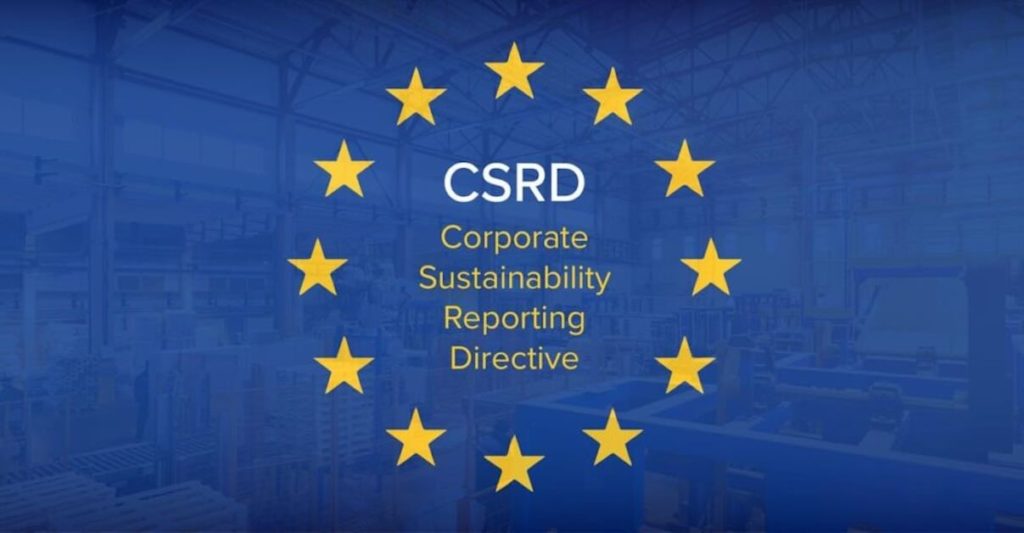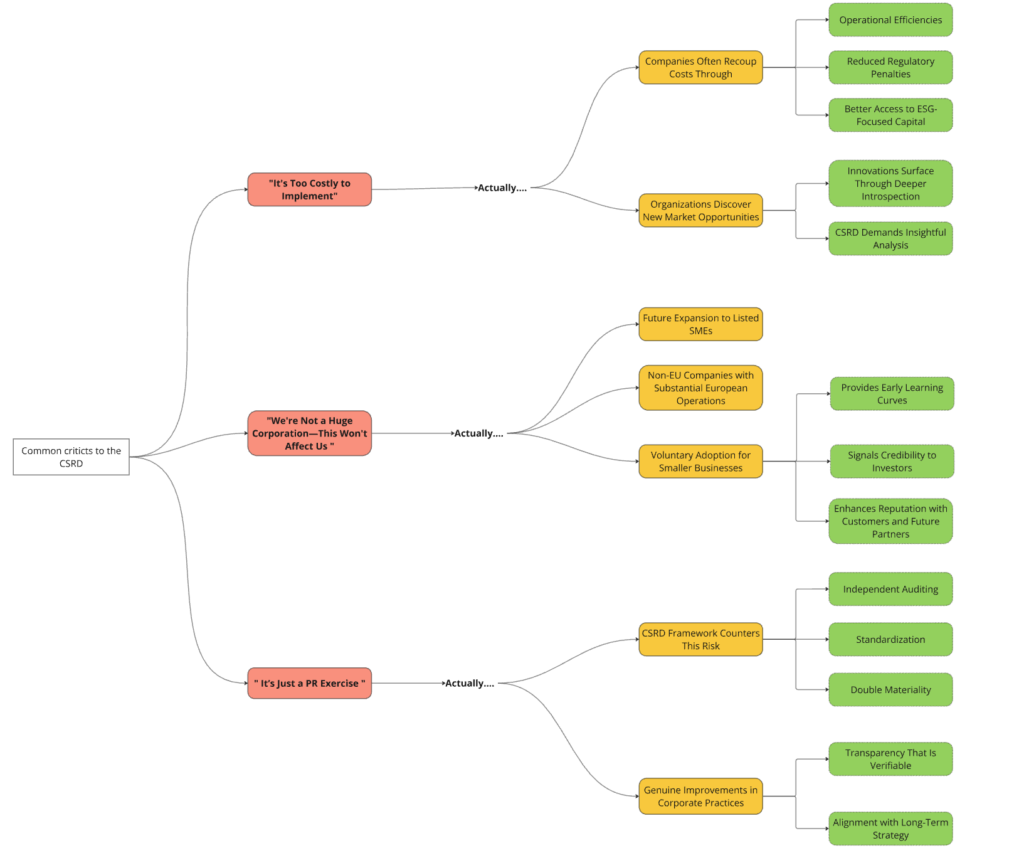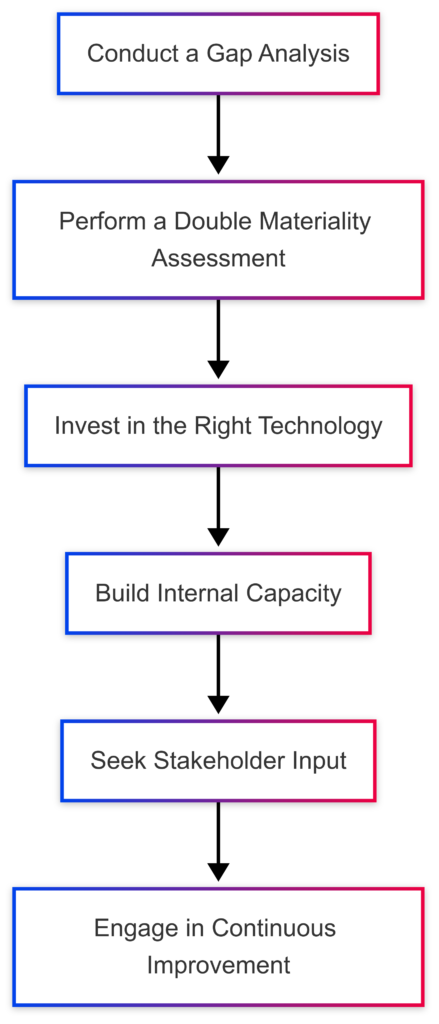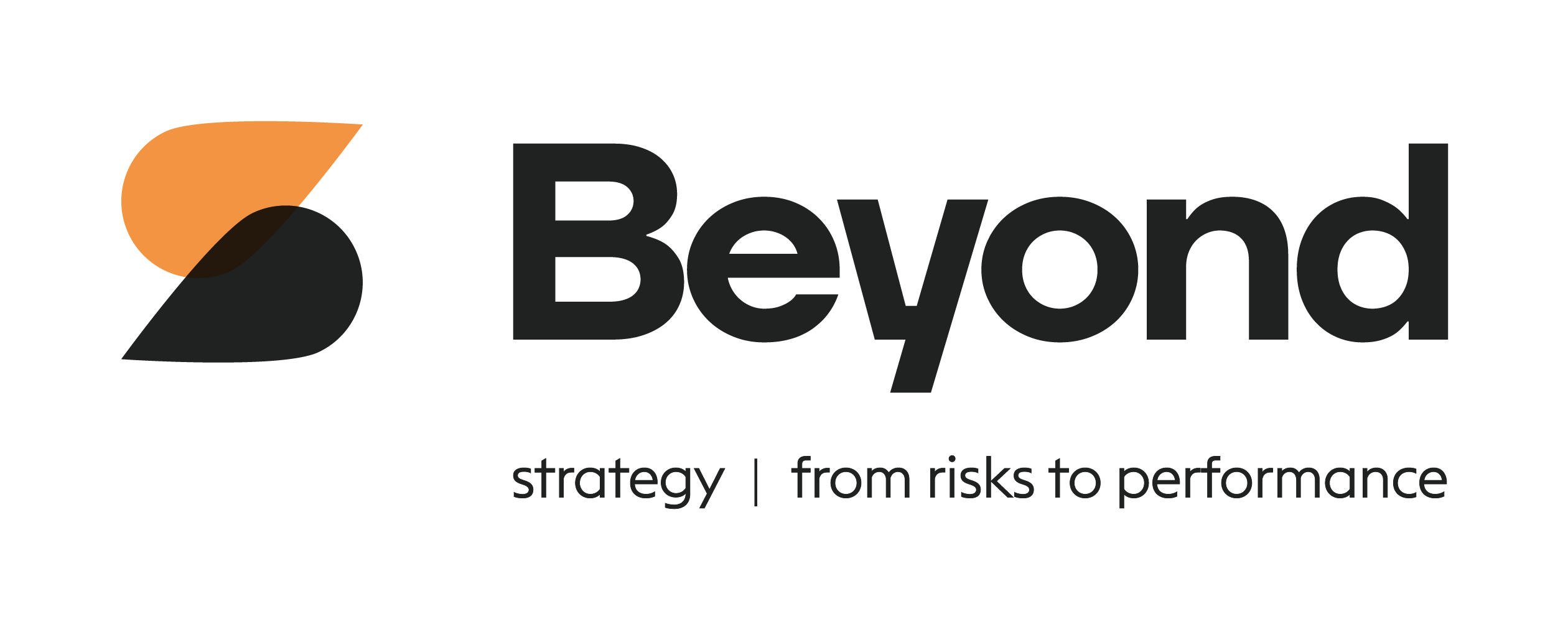Look, we get it. When you first hear about CSRD (Corporate Sustainability Reporting Directive), your mind probably jumps to mountains of paperwork and endless compliance headaches. Trust us, we’ve been there. But here’s the thing – this new EU directive isn’t just another bureaucratic burden to add to your plate. It’s actually an opportunity in disguise, and hopefully, this article will convince you why you should embrace a CSRD report.

Understanding CSRD: Beyond Compliance
The Corporate Sustainability Reporting Directive builds on the Non-Financial Reporting Directive (NFRD) but with expanded scope and more rigorous disclosure requirements. CSRD mandates detailed reporting on Environmental, Social, and Governance (ESG) factors, including:
- Double Materiality: Companies must assess not just how sustainability issues affect them financially, but also how their operations impact society and the environment. This way of doing things ensures that investors, customers, and regulators receive a holistic perspective on corporate responsibility.
- Auditing Requirements: Independent, external assurance evolves from limited to reasonable over time, increasing the credibility of published information.
- Digital Reporting Standards: Mandatory electronic reporting (e.g., XBRL tagging) allows for easier comparison across companies and sectors.
While these new expectations can be challenging at first, the framework ultimately facilitates transparency and positions a company to engage investors, regulators, and customers with credible data.

Let’s start with the benefits
Better access to money
A growing segment of investors prioritize firms that demonstrate strong ESG performance. Integrating CSRD reporting into corporate governance signals a commitment to ethical practices and forward-looking strategies—making your organization more attractive to ESG-oriented capital. Recent market analyses indicate that “86% of Millennial investors prioritize sustainable investments,” reflecting a fundamental shift in the investor landscape.
Strengthened Stakeholder Trust
We all know trust is hard to build and easy to lose. When you’re open about your sustainability efforts – both successes and challenges – people appreciate your honesty.
Operational Excellence and Long-Term Cost Savings
In the process of collecting and analyzing data for CSRD, many firms unearth inefficiencies—such as wasted materials, excessive energy consumption, or outdated supplier practices. By addressing these issues, organizations can reduce costs while enhancing their environmental footprint.
Future-Proofing and Competitive Differentiation
Climate change, social responsibility, governance issues – these aren’t going away. By getting ahead of CSRD requirements now, you’re basically giving your company a head start in the race everyone will eventually have to run.
The table below summarizes and expands on the benefits of the CSRD.
| Benefit | Description | Outcome |
|---|---|---|
| Trust & Reputation | Enhances stakeholder confidence via transparency | Stronger brand image, heightened loyalty |
| Risk Management | Identifies social & environmental challenges proactively | Reduced crises, mitigated negative publicity |
| Regulatory Compliance | Ensures alignment with EU/Swiss mandates | Avoided penalties, smoother reporting cycles |
| Long-Term Cost Savings | Detects inefficiencies and resource misallocations | Streamlined operations, improved ROI |
| Investment Attraction | Demonstrates forward-looking and ethical governance | Access to ESG-driven funding opportunities |
| Strategic Opportunities & Innovation | Encourages process upgrades and new market offerings | Competitive edge, more diverse revenue streams |
Now let’s talk about the critics – and why they fall short
Despite compelling benefits, some executives remain sceptical, citing three main counterarguments:
“It’s Too Costly to Implement”
Critics argue that developing reliable reporting systems and undergoing external assurance drains valuable resources. However, while up-front investment can be significant, studies show that companies often recoup these costs through operational efficiencies, reduced regulatory penalties, and better access to ESG-focused capital. Over time, organizations commonly discover new market opportunities—innovations that wouldn’t have surfaced without the deeper introspection that CSRD demands.
“We’re Not a Huge Corporation—This Won’t Affect Us”
Initially, CSRD applies to larger enterprises, but it will eventually encompass listed SMEs and even non-EU companies with substantial European operations. Even for smaller businesses not yet mandated, adopting sustainability reporting voluntarily provides early learning curves and signals credibility to investors, customers, and future partners.
“It’s Just a PR Exercise”
Sceptics claim that sustainability reports can devolve into “greenwashing” if they lack depth. The CSRD framework counters this risk through standardization, double materiality, and independent assurance. When done right, CSRD leads to genuine improvements in corporate practices—transparency that is both verifiable and aligned with a long-term strategy.

Turning Skepticism into Strategic Advantage
Balancing Short-Term Costs with Long-Term Gains
Multiple analyses confirm that initial outlays often serve as stepping-stones to operational savings, brand elevation, and risk mitigation. According to intial research, early investments in sustainability reporting are pivotal catalysts for future efficiency.
Navigating Regulatory Mandates Proactively
Regulatory standards can be viewed as more than just rules. By connecting internal goals with external requirements early on, companies create a positive culture focused on ongoing improvement. This is especially true when technology—like data analysis and real-time monitoring—makes sustainability reporting easier and encourages teamwork across departments.
Strengthening Internal Resilience and External Trust
CSRD’s requirement for robust, verifiable disclosures compels companies to confront risks—environmental, social, or otherwise—that might otherwise go unnoticed until it’s too late. Over time, this promotes resilience, brand loyalty, and investor confidence, ultimately transforming the reporting process into a strategic asset rather than a mere compliance obligation.
Practical Steps to Get Started
A systematic approach to CSRD compliance involves several key components:

- Conduct a Gap Analysis: Compare your current reporting processes against CSRD’s requirements to identify key areas for development.
- Perform a Double Materiality Assessment: Evaluate how sustainability issues affect your business value, and how your operations affect societal and environmental well-being.
- Invest in the Right Technology: Use advanced software solutions and data analytics to streamline data collection, assurance, and reporting processes.
- Build Internal Capacity: Involve finance, HR, supply chain, and communications teams so everyone understands their role in sustainability reporting.
- Seek Stakeholder Input: Collaborate with employees, customers, NGOs, and investors to shape material topics and address pressing concerns.
- Engage in Continuous Improvement: Use each reporting cycle to set higher sustainability targets and refine your operational strategies accordingly.
Conclusion: A Roadmap to Sustainable Success
The best time to start thinking about CSRD was yesterday. The second best time is now. But here’s the good news – you don’t have to figure it all out at once. Start small, build gradually, and remember that perfect is the enemy of good.
Think of CSRD as a journey, not a destination. Every step you take toward better sustainability reporting is a step in the right direction. And trust me, your future self (and your stakeholders) will thank you for starting now.
Remember, sustainability reporting isn’t just about checking boxes – it’s about future-proofing your business and being part of the solution to some of our biggest global challenges. And who wouldn’t want to be part of that?
Got questions about getting started with CSRD? Don’t hesitate to contact us. We’re all in this together, and sometimes it is ok to ask for some external help.



